Grumman F11F-1
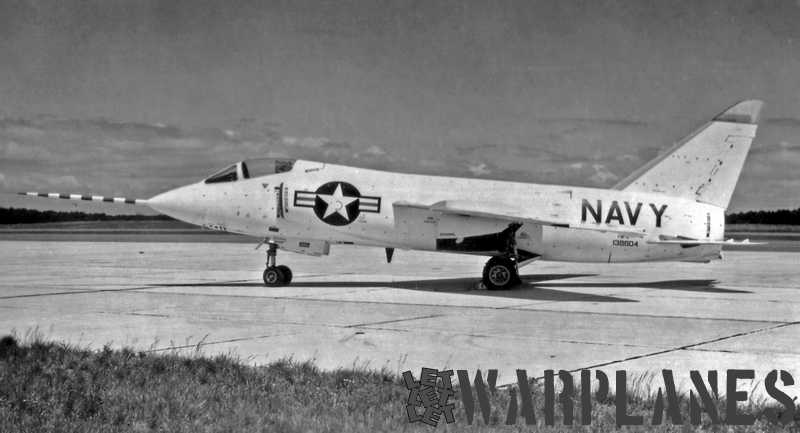
In the early fifties aircraft development went very fast. With subsonic types like the F-86 Sabre operational a next generation of fighters was to follow with supersonic performances.
The first U.S. Navy type to be supersonic in horizontal flight was the Grumman F11F-1 Tiger.
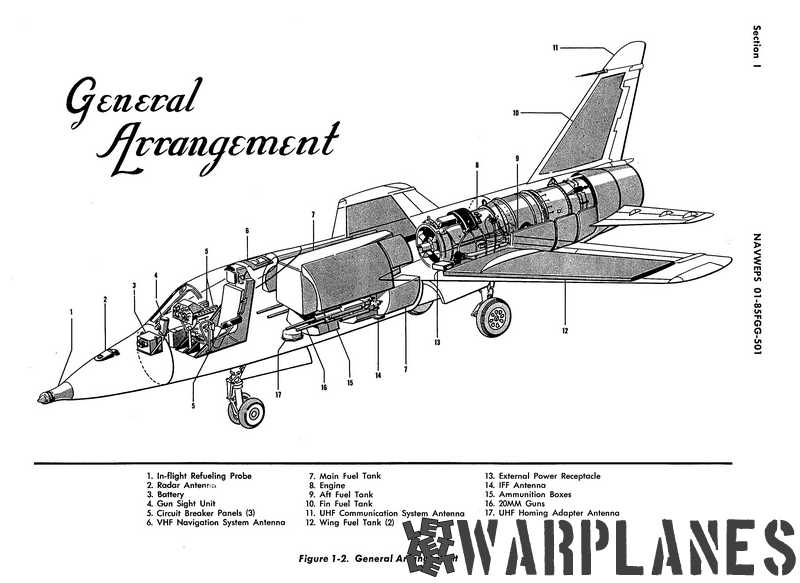
It looked very promising when introduced, but it was soon overshadowed by even higher performing fighters like the F8U Crusader. Grumman’s Tiger was a typical light-weight interceptor in a time U.S. jet fighters were not only growing in size, but also in weight and costs. In fact its light weight was a disadvantage since this resulted in a very mediocre combat range. Further, the selected engine, the Wright J65 never fully met its expectations. From British origin, it was an ‘Americanized’ licence built version of the Armstrong Siddeley Sapphire. For the Tiger, it not only lacked sufficient power, but also reliability and it needed a lot of maintenance to keep it running properly. The final result was that the Tiger was only built in modest numbers and withdrawn from first-line service after only four years.
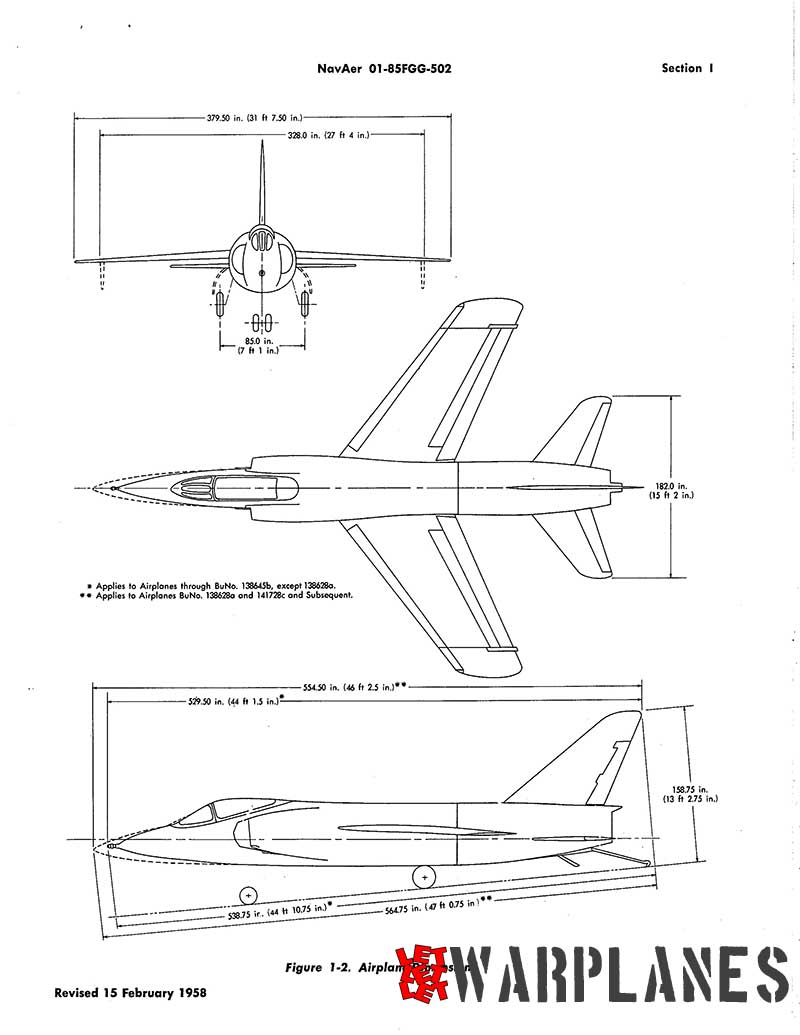
Development and test flying:
The F9F-1/5 Panther and F9F-6/9 Cougar were respectively jet fighters produced by Grumman for the U.S. Navy with a straight and a swept wing. The last version was the F9F-8. It had a maximum speed of 1050 km/h but was unable to exceed the speed of sound in a dive.
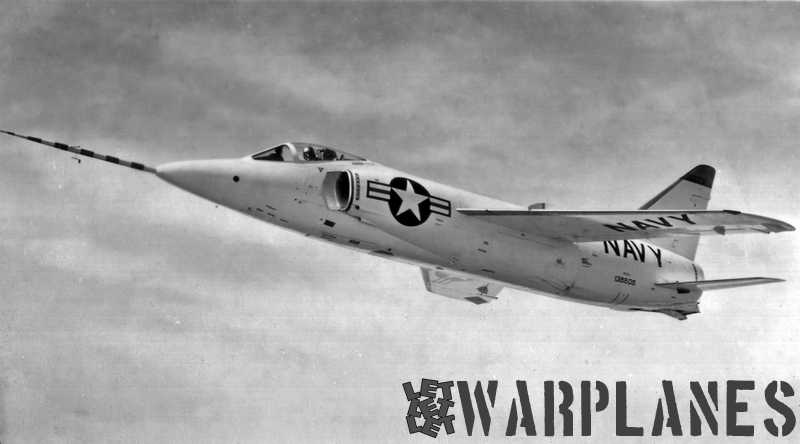
When NACA aerodynamicist Richard T. Whitcomb introduced his famous ‘Area-Ruling’ principles Grumman started at its own expenses with the incorporation of the Area Ruling in the Cougar design. Under leadership of Joseph Gavin Project G.98 was started in December 1952. Originally the type designation F9F-9 was used, but since it was soon evident the G.98 would not even have a close resemblance to the Cougar it was later re-designated as F11F-1 with another name out of the feline series: the ‘Tiger’. It featured the characteristic ‘Coke-bottle’ fuselage shape to create the minimum possible drag at sub- and supersonic speeds; strictly using the Whitcomb principles. It had further swept wings and split air intakes for the single Wright J65 jet engine. It would exceed the speed of sound in level flight. Armed with four 20 mm guns and fitted with an arrester hook and folding wingtips it would be the next generation of U.S. Navy carrier based fighters.
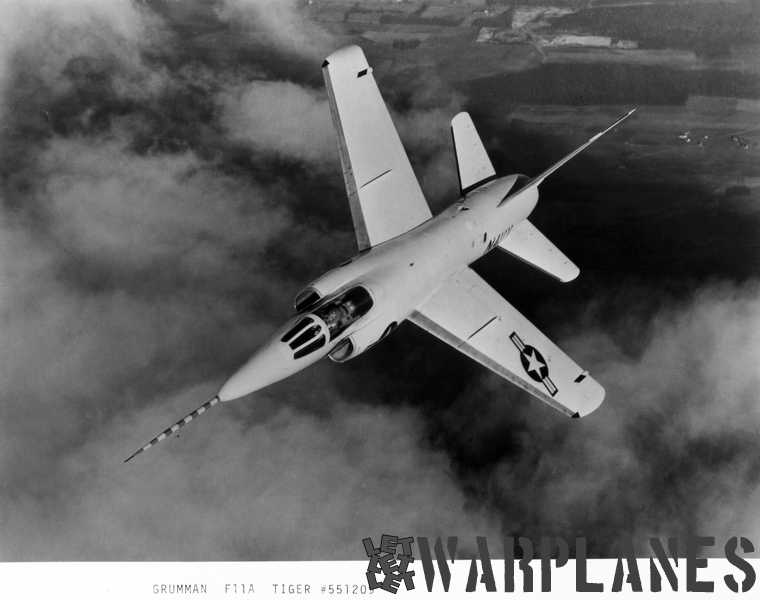
(Mark Nankivil collection)
The U.S. Navy ordered three prototypes, one for static testing and the other two for flight testing. Assigned Bureau of Aeronautics numbers (BuNos.) were 138603 to 138605.
Officially the prefix ‘X ‘to indicate they were prototypes was never used and initially these three aircraft were still delivered as the ‘F9F-9’. Another three evaluation aircraft, BuNos. 138606 to 138608, were ordered followed by a first production order of an additional 39 with BuNos. 138609-138647.
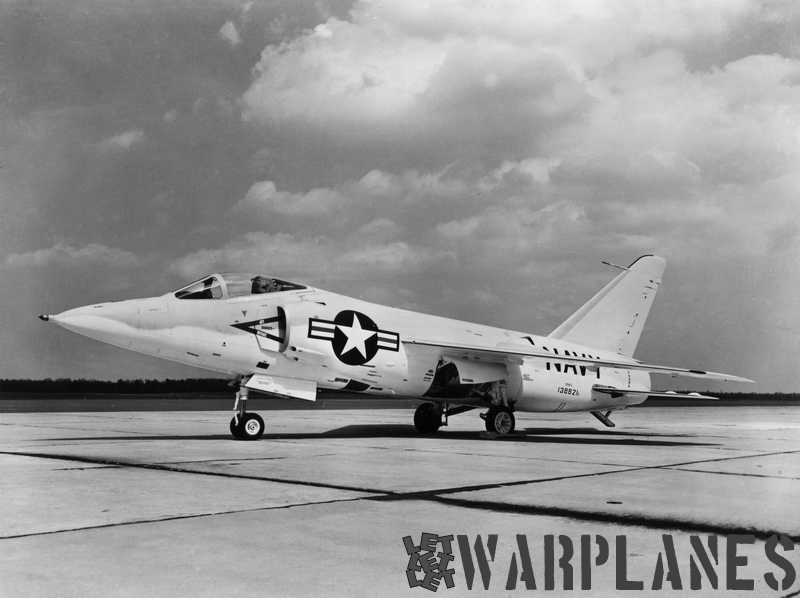
(Grumman photo)
First flight with BuNo. 138604 was made on 30 July 1954 by Grumman test pilot Corky Meyer. Although it was lost on 20 October 1954 when it crashed near the Potomac River it was found to have excellent handling properties over most of the flight envelope. However, it was also evident that with the J65-W-7 engine it just lacked the power to exceed Mach 1 in level flight. Luckily the pilot, Lt Cdr W.H Livingston successfully bailed out before the crash of the first F11F-1. Although it was recovered for accident investigation it was damaged far beyond repair! The second prototype 138605 was fitted with a J65 fitted with an afterburner. It could exceed Mach 1, but only with a very small margin!
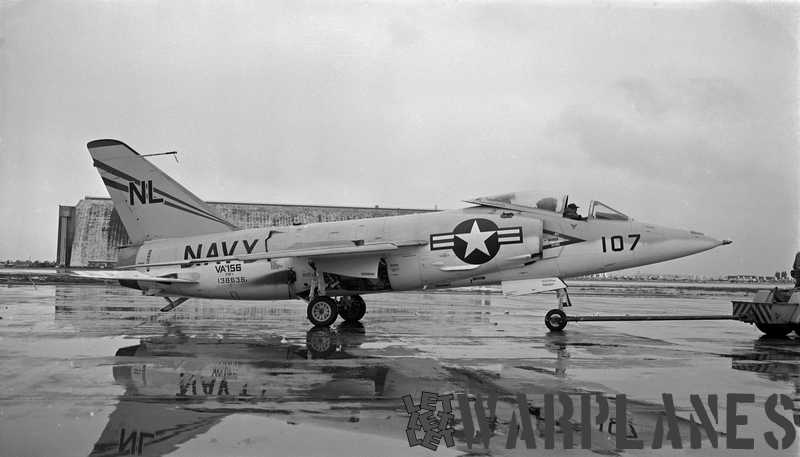
(Mark Nankivil collection)
Based on the flight experiences of the first two prototypes the third aircraft 138606 was modified on a number of points to incorporate all items from the lessons learned during the testing program. This included a redesigned vertical tail with a narrow-chord rudder, boundary layer splitter plates for the engine intakes, a sliding canopy with a longer clear rear and a slightly extended nose section.
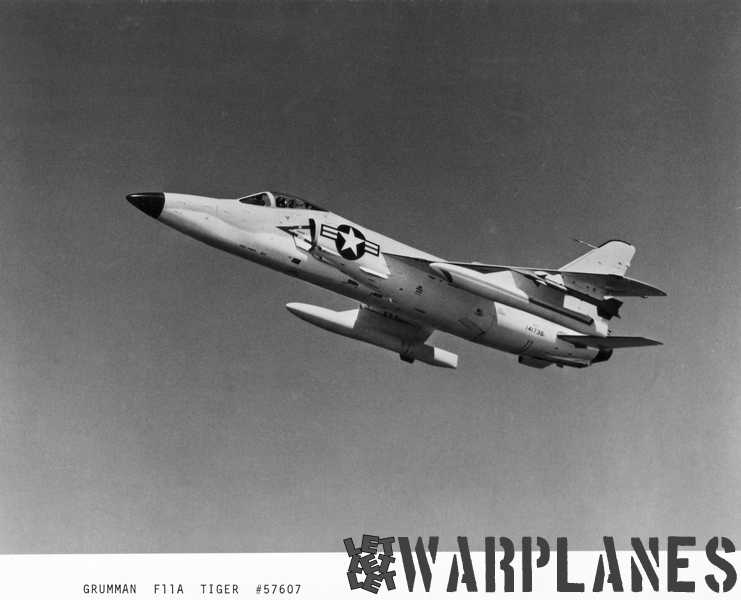
(Mark Nankivil collection)
Into production:
Production F11F-1 Tigers started to roll from the production line from March 1957. The first batch of 42 machines, including the six evaluation machines, could be easily recognized by their short nose. The final 157 production machines, last aircraft supplied in January 1957, had a longer nose to incorporate a radar installation for the guns. However, this was never installed. A number of short-nose Tigers were converted to long-nose. The nose-mounted refuelling probe of the short-nose batch moved later to the left side of the nose section. Not all long-nose Tigers were fitted with the in-flight refuelling probe. If needed the Tiger could be fitted with two extra fuel tanks under the wings. These were, just like the plane’s fuselage, fully ‘Area Ruled’!
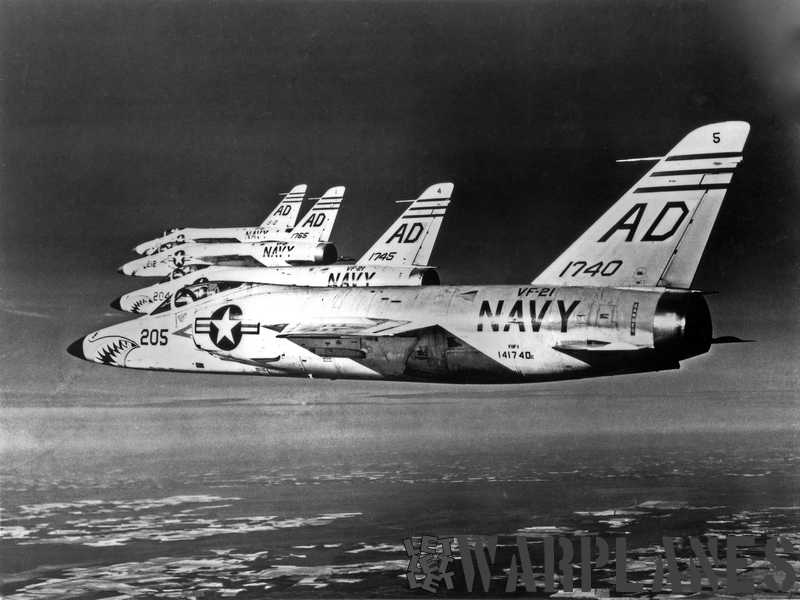
Total order placed for the long-nose Tiger was for 253 aircraft (BuNos. 141728-141980), but production was terminated after the 157th aircraft of this contract, BuNo. 141884, was delivered. The rest of the contract was cancelled.
Planned versions never built were:
-F11F-1P photo reconnaissance version with a longer nose
-F11F-1T a two-seat training version
F11F-2 was the initial designation for the J79 powered version built as the F11F-1F Super Tiger. Under the new mutual designation system this would have been the F-11B where the F11F-1 was re-designated as the F-11A.
Operational career:
After initial operational testing by VX-3 the internal fuel capacity was increased by adding extra fuel cells in the vertical fins and along the air intake ducts. It entered service at VA-156 of the Pacific Fleet on 8 March 1957. U.S. Navy unit VX-3 continued its operational testing, resulting eventually in the long-nose version. VA-156 later became VF-111. Also Pacific Fleet VF-191, VF-121 and VF-51 were equipped with the Tiger. Last two U.S. Navy squadrons, receiving the Tiger were VF-33 and VF-21 operating in the Atlantic area.
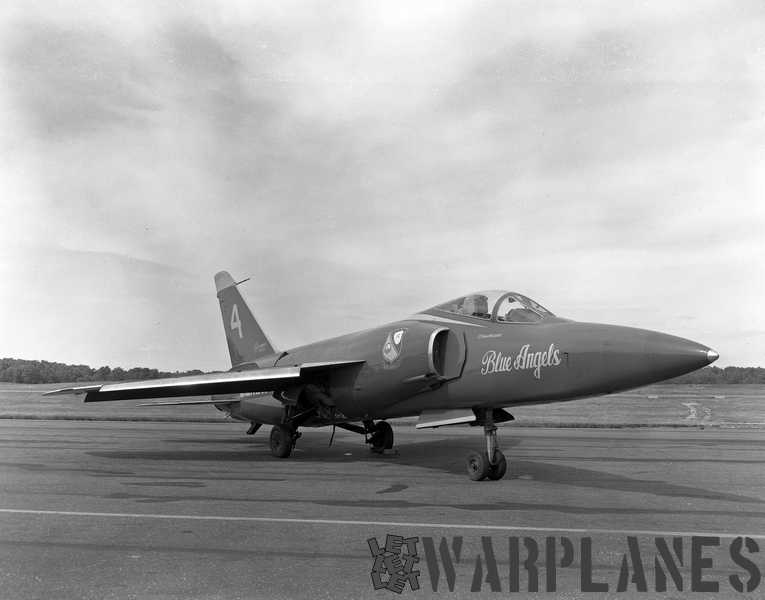
As a fighter the Tiger had a short operational career of only four year. They were soon phased out of front line squadrons and reallocated for some time as solo-trainers to the Advanced Training Command and the Navy Reserves. The last Tigers were withdrawn from serice in mid-1967.
Greatest shortcomings of the Tiger were its relatively low range and continuing maintenance problems with the J65 engine. It not only produced in most cases lower thrust than expected but it was also found to be unreliable when used on aircraft carriers. Where the J65 performed quite well on land-based aircraft types, it was found to be very susceptible to corrosion when operated on sea. The F-11F-1 was unable to carry an underwing load for more offensive roles and the Tiger was soon overshadowed by other types with much better performances like the F8U Crusader and later by the F4H Phantom.
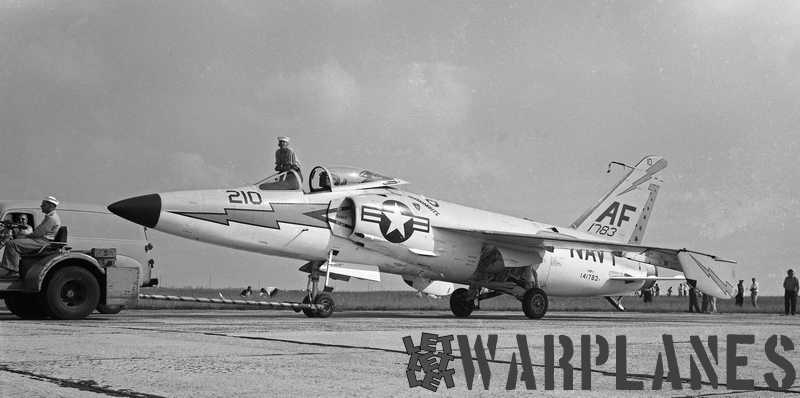
A unique incident with a Grumman Tiger took place on 21 September 1956 when Grumman test pilot Tom Attridge managed to shoot himself down during cannon firing tests when he entered in a shallow dive the trajectory of the 20 mm projectiles he had fired five seconds earlier. He managed to make an emergency landing and escaped uninjured.
The F11F-1 had impressive zoom-climb performances which was clearly shown on 18 April 1958 when Lcdr C.C. Watkins set an altitude record of 23,451 m.
The F11F-1 had a quite high accident rate and over the years some 80 were lost in crashes.
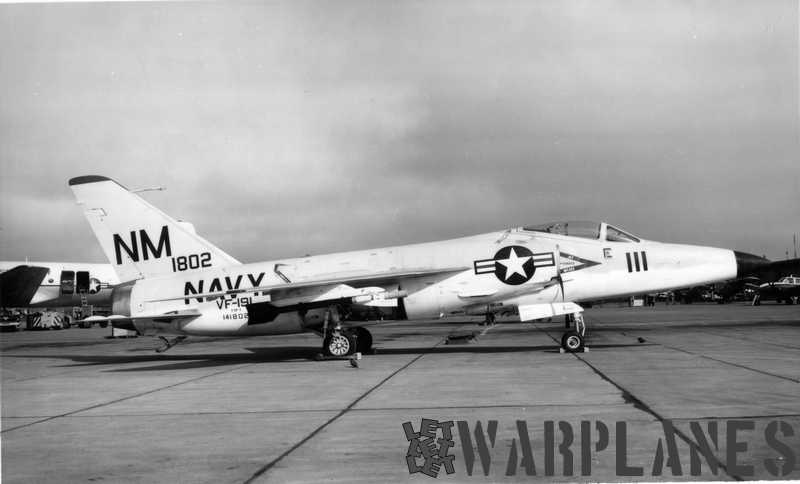
Production:
F9F-8/9 static test frame (not flown): 138603
F9F-9 prototype 138604
F11F-1 (short-nose): 138605 to 138647 (42)*
F11F-1 (long-nose): 141728 to 141884 (157)
F11F-1F Super Tiger: 138646 and 138647**
* including 6 evaluation aircraft unofficially re-designated as YF11F-1
** modified from last two production aircraft
Total production: 201
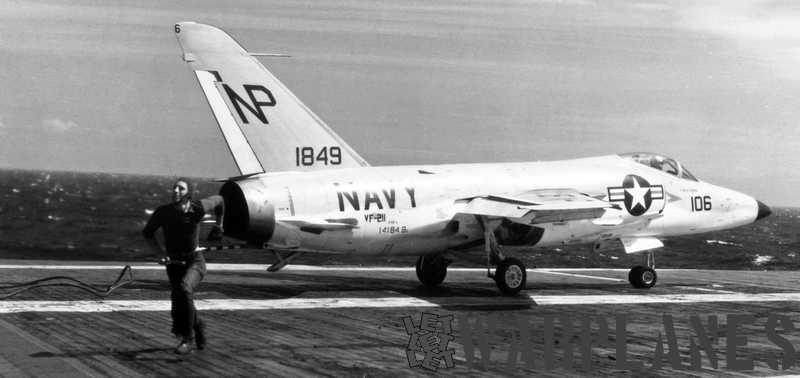
Use at the Blue Angels:
In spite of its shortcomings as a shipboard fighter, the Tiger was very pleasant to fly and showed to have exceptional handling characteristics. In fact it was a perfect plane at that time for the famous U.S. Navy aerobatics team the Blue Angels. The Tiger could be flown with great precision at aerobatic displays and it replaced in 1957 the Grumman Cougar for a quite long period. While all other Tigers were meanwhile phased out already, the Blue Angels continued to fly the Tiger until 1969 when it was replaced by the F-4 Phantom.
Blue Angels flew both the short and the long nose versions.
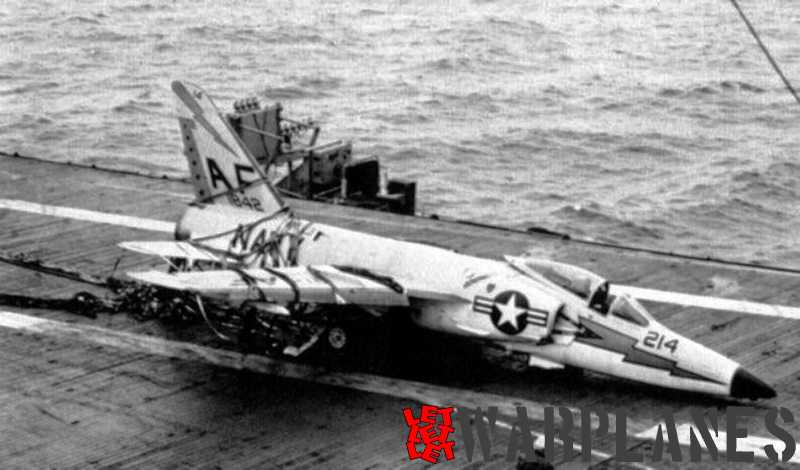
Two ex-Blue Angels long-nose F11F-1’s Tigers (or F-11A’s) kept in storage at Davis -Monthan storage & disposition center were in 1973 refurbished by Grumman to take part in a test program for thrust reversal experiments at combat conditions. One of these, BuNo. 141853 was fitted with a thrust reverser from Rohr Industries. The other one, BuNo. 141824 was used as a chase plane. The experiments were made over 1974-1975 at NATC Patuxent River. After these flight experiments both planes were returned to Davis-Monthan. From the list of survivors below we learn that both aircraft still exist!
Survivors:
The following F11F-1 Tigers, all long-nose versions, are known to exist:
141735 – Yanks Air Museum in Chino, California.
141783 – MAPS Air Museum in Canton, Ohio.
141790 – Grissom Air Museum at Grissom Air Reserve Base near Peru, Indiana.
141802 – Lawson Creek Park in New Bern, North Carolina.
141811 – Combat Air Museum in Topeka, Kansas.
141824 – Pima Air & Space Museum in Tucson, Arizona.
141828 – National Museum of Naval Aviation at Naval Air Station Pensacola, Florida.
141832 – Cradle of Aviation Museum in Garden City, New York.
141851 – NAES Lakehurst, New Jersey.
141853 – Pueblo Weisbrod Aircraft Museum in Pueblo, Colorado.
141859 – Veteran’s Memorial Park in Tishomingo, Oklahoma.
141864 – NAS Oceana Air Park, Virginia.
141868 – Planes of Fame Air Museum in Valle, Arizona.
141872 – Air Zoo in Kalamazoo, Michigan.
141882 – Pensacola Airport in Pensacola, Florida.
(Source Wikipedia)
-The second prototype of the Super-Tiger, BuNo. 138647 is now on display in the Navy technical museum at China Lake, California. The first Super-Tiger was used as a fire-fighting instructional airframe. What was left of it was scrapped in the early eighties.
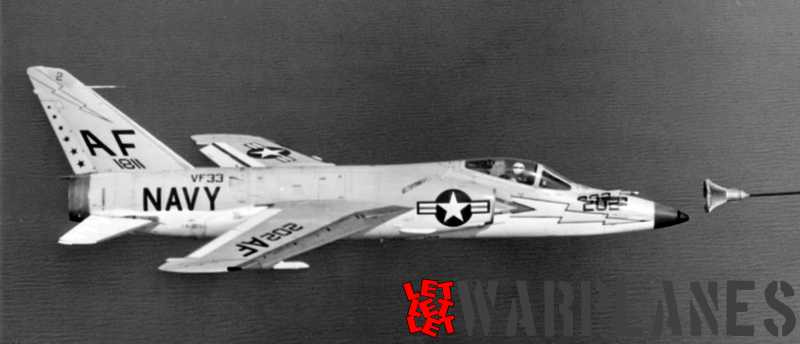
Technical details:
Power plant: Wright J65-W-6 jet engine of 3538 kg thrust (short-nose version)
Wright J65-W-18 of 3538 kg thrust; 4990 kg with afterburner (long-nose version)
Sizes: wingspan 9.64 m
length 13.47 m (14.08 m long-nose)
height 4.03 m
wing area 23.23 m2
Weights: empty weight 6036 kg (6500 kg long-nose)
max. TO weight 10, 657 kg (10,921 kg long-nose)
Performances: max. speed 1179 km/h at sea level (1355 km/h at 11,000 m long-nose)
service ceiling 12,771 m
range 500 km combat range on internal fuel
Armament: four 20 mm cannons in the nose and provision for up to four Sidewinder air-to-air missiles under the wings
Accommodation: pilot only
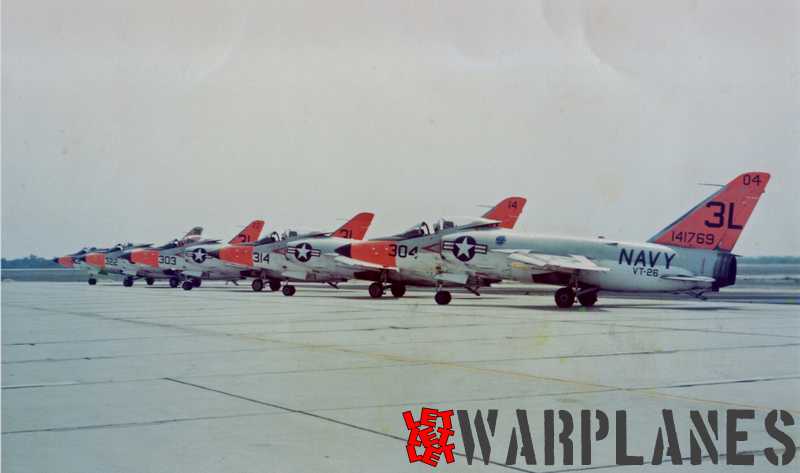
Camouflage and markings:
-Both short-nose and long-nose versions flew operationally in standard U.S. Navy colours gull grey upper side and off-white underside. Last four digits of BuNo. and the code and colour of the aircraft carriers were on the vertical tail. Squadron number was in general placed above the full BuNo. on the sides of the rear fuselage and most aircraft carried an individual number on the nose. Sometimes colour full extra markings were used including shark mouths. The Tigers used as solo-trainer had additional nose and tail sections painted in hi-vis red.
-The two F11F-1F Super-Tigers flew in a colorful white and red scheme showing U.S. Navy logo and US military markings. The second prototype was later repainted in a bare metal/bright red colour scheme.
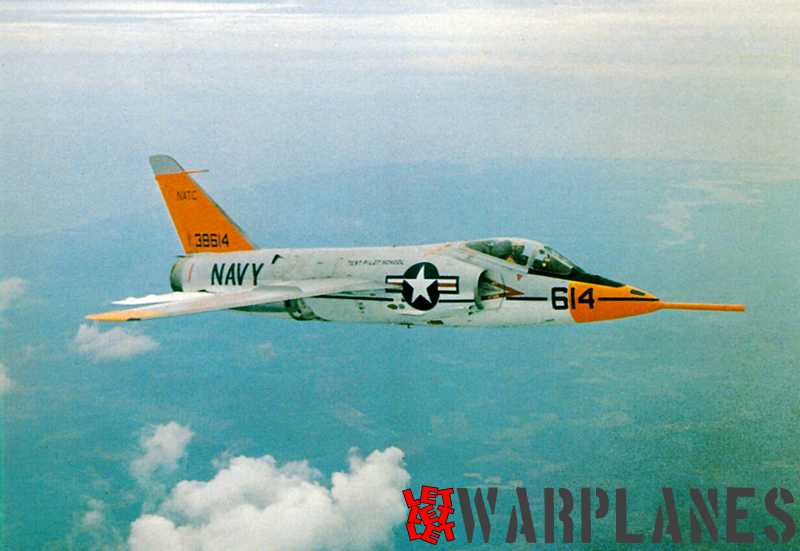
The Super-Tiger:
In order to overcome the shortcomings of the F11F-1, Grumman designed largely at its own expenses as the G.98-J a greatly improved version of the Tiger fitted with a much more reliable and powerful engine: the General Electric J79. This engine was already in use for the F-104 Starfighter and the McDonnell F4H Phantom II. To fit the longer J79, the fuselage had to be extended by almost 1 meter. Since the J79 produced 50% more power than the J65, the fuselage also had to be strengthened. The new version of the Tiger received the type designation F11F-1F. Although the press has always named this type the Super-Tiger, this name was never officially given by Grumman! It also never received a new type-designation when the U.S. Navy and the U.S.A.F. introduced a mutual designation system. It would have been the F-11B, but this was never officially assigned…
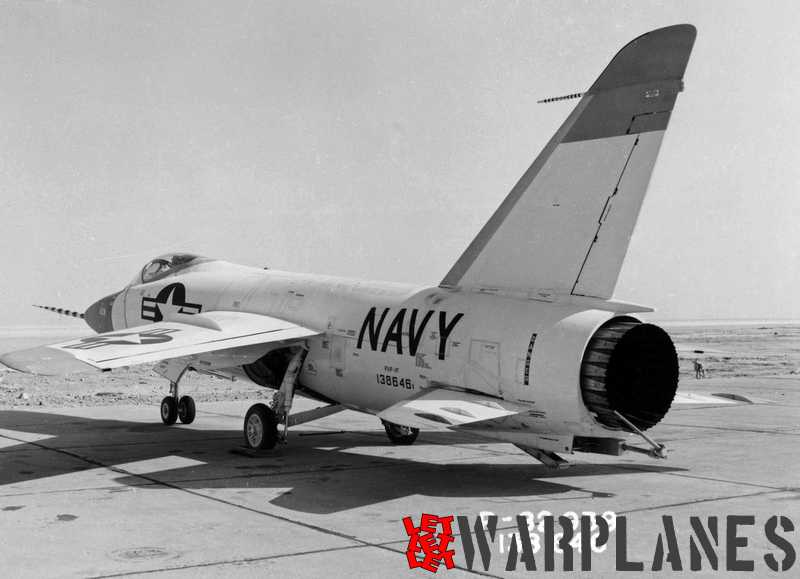
For the construction of two prototypes, the last two F11F-1 Tiger airframes from the production line were used. They carried the Bureau of Aeronautics registration numbers 138646 and 138647. The first Super-Tiger made its maiden flight on 22 May 1956 from the airfield of the Berthpage plant. Pilot on this occasion was Grumman test pilot Corky Meyer. The Super-Tiger was extensively tested both by U.S. Navy and U.S. Air Force pilots. The flight performances were found to be very good, without losing the pleasant flight characteristics of the earlier Tiger. How good it performed was clearly proved by Grumman pilot John Norris when he set an unofficial world speed record of 2230 km/h on 2 May 1957.
Further, on 12 April 1958, LCDR George Watkins set an official world record for altitude when he reached 23,416 m during a zoom-climb. However, both U.S. Navy and U.S. Air Force showed no interest in operational versions and no production orders for the Super-Tiger were placed. The Super-Tiger was extensively evaluated by various teams of experts from countries like Germany, Japan and Canada but finally the Super-Tiger lost out against the F-104 Starfighter in the ‘deal of the century’ ! All these countries finally selected the F-104, a choice that can be challenged retrospectively since the F-104 was a quite unforgiving aircraft!
Remarks:
-Both Super-Tiger prototypes never carried any armament.
-During its test life, the second Super-Tiger no. 113647 was used for a short period by General Electric under a bail-contract for testing of the J79 engine. It flew with GE name and logo on the tail.
-One of the unsuccessful proposals for the operational Super-Tiger was to use it from a zero-length mobile rocket launcher.
-The first Super-Tiger has flown for a short period with extra ventral mounted folding fins at the tail in the same way as had been done for the XF8U-3 Super-Crusader!
Technical details (F11F-1F):
Power plant: General Electric YJ79-GE-2 jet engine of 4355 kg thrust (6808 kg with afterburner)
Sizes: wingspan 9.64 m
length 14.55 m
height 4.40 m
wing area 23.23 m2
Weights: empty weight 7465 kg
loaded weight 11,833 kg
Performances: max. speed 2230 km/h (Mach 2.09)
service ceiling 15,331 m
range 1828 km on internal fuel
Armament: four 20 mm cannons in the nose and provision for two dorsal-mounted Sidewinder air-to-air missiles
Accommodation: pilot only
Nico Braas
References:
-René Francillon, Grumman aircraft since 1929, Putnam/Naval Institute Press (1989)
-Steve Ginter, Grumman Tiger F11F-1, Naval Fighters No. One, S. Ginter USA (1980)
-Corwin Corky Meyer, Grumman’s Mach-2 International F11F-1FSuper-Tiger, Naval fighters no. 44 (1998)
-Mike Spick, The iron Tigers, Air International, June 1991









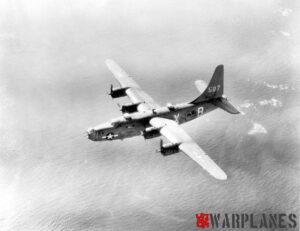
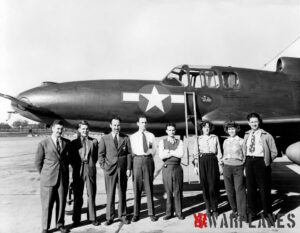
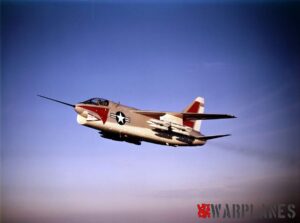
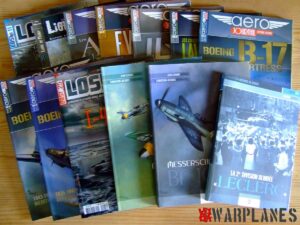
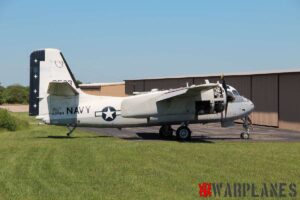
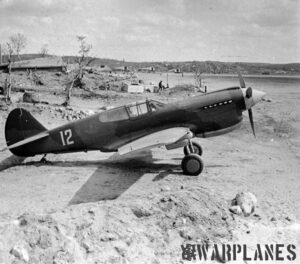

Excellent write up on this great Grumman aircraft not appreciated by the military brass (forget about the brainless bureaucrats ! ) Would have been a much different outcome for Grumman and the rest of the NATO nations that had gambled with the F-104, not to mention the lives of the pilots that lost their lives on this unforgiving aircraft. I like the F-104 just like any other airplane enthusiast but to expect this aircraft to do everything was the folly of the Europians. We did the very same thing with it in South East Asia by the way. Who knows, we all cannot be armchair generals but we try! God bless and hope we do right with our military in the future.